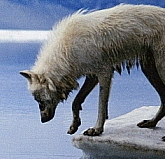Graphics_Demo basepin selection
 K2
Posts: 693
K2
Posts: 693
in Propeller 1
In TV_Text_Demo it is relatively easy to see that the output pin group is selected by passing the value 12 to TV_Text at start up. I've made use of that code for many years to drive composite monitors of various sorts. Now I need composite video graphics.
In the Graphics_Demo -> Graphics -> TV combo, the specification of the output pin group seems to be somewhat obfuscated, especially for a Demo program. Is there something obvious I'm overlooking?
In the Graphics_Demo -> Graphics -> TV combo, the specification of the output pin group seems to be somewhat obfuscated, especially for a Demo program. Is there something obvious I'm overlooking?


Comments
Sorry, why wouldn't you just post the code in question or link directly to it?
I'm sure if I try and guess I might get it right but I couldn't be bothered.
Simplified:
Set the pin group in the upper nibble and the lower nibble to %0000 if you use the lower 4 pins of the pingroup, or %0101 if you use the upper 4 pins of the group.
A possible calculation from the pin number (untested):
Andy
Anyway, I'm stunned and amazed at what Chip created in Graphics.spin. Today's amazement centers on his creation of a vector font based on simple drawing primitives and a specifiable pixel.
This worries me. What if robots are actually clever, useful, or fun?!